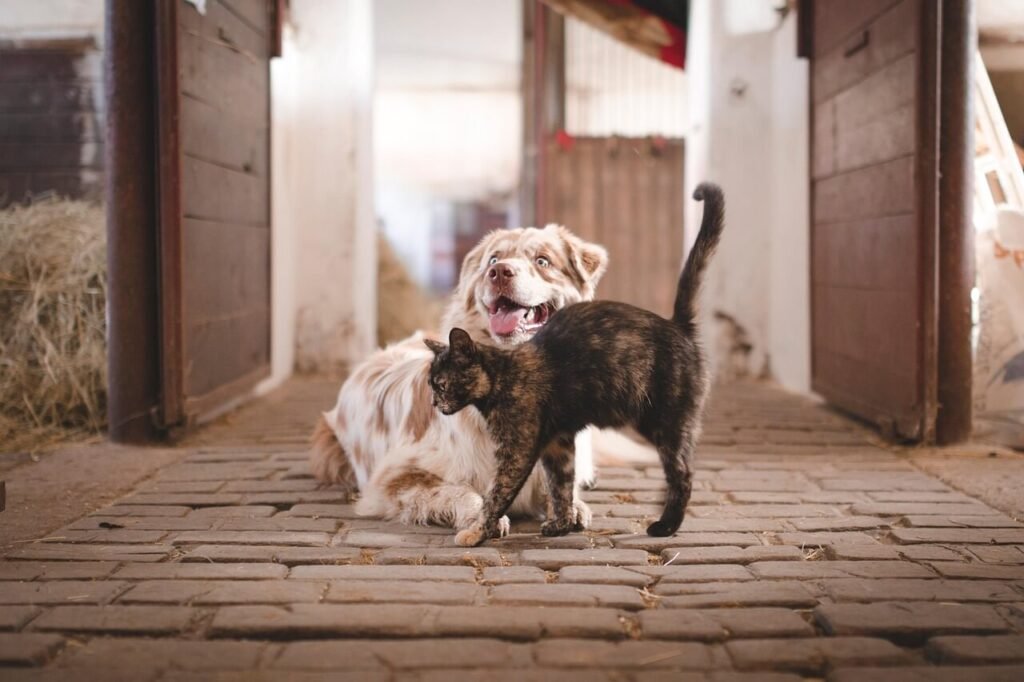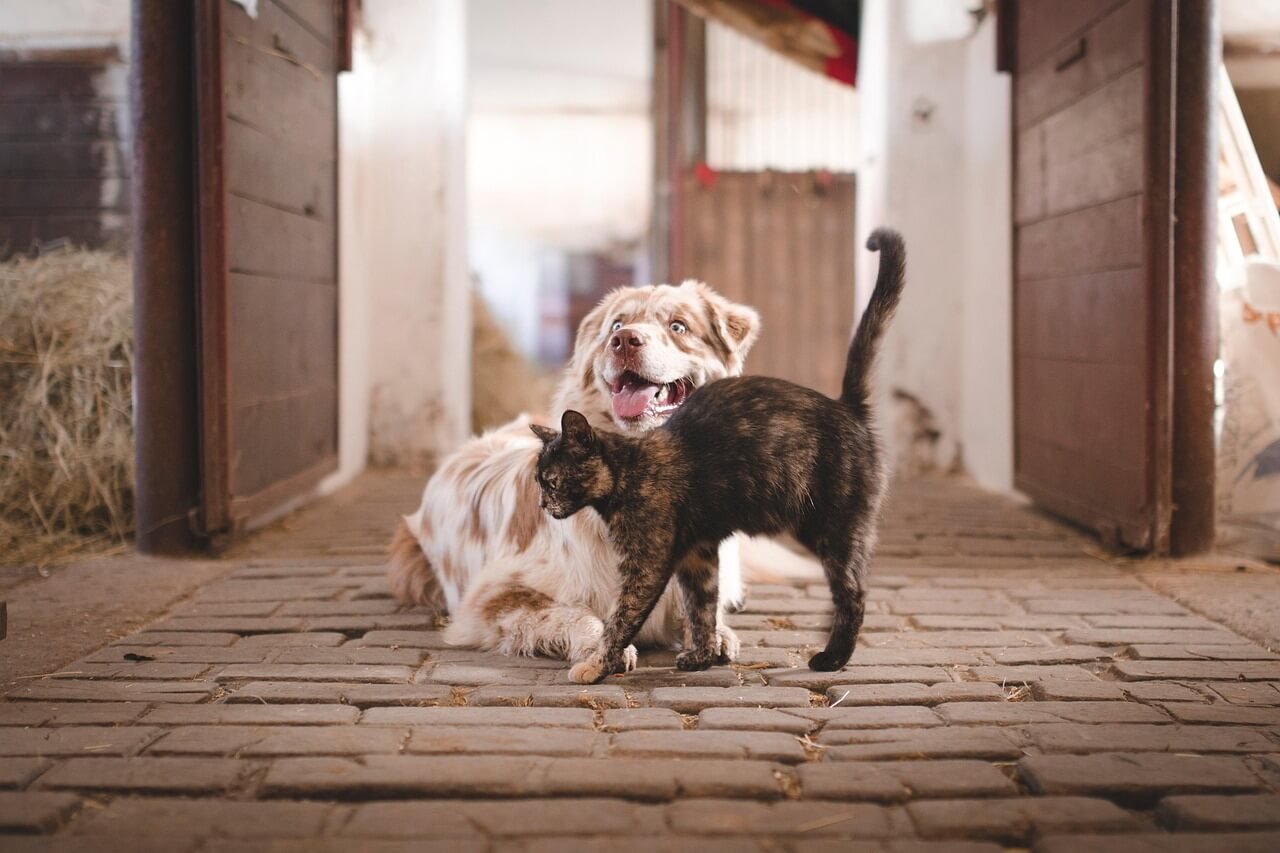Cat Poop vs Dog Poop: What’s the Difference?
Whether you’re a proud cat parent, a devoted dog owner, or someone lucky enough to have both, one thing is certain: poop happens. But did you know that the waste your furry friends leave behind can tell you a lot about their health and habits? Cat poop and dog poop may seem similar at first glance, but they have distinct characteristics that set them apart. In this guide, we’ll explore the differences between cat poop and dog poop, what they reveal about your pet’s well-being, and how to keep things clean and healthy for both you and your pets.
Physical Differences Between Cat Poop and Dog Poop
While both cats and dogs produce waste as part of their digestive process, there are notable physical differences between their poop. Understanding these distinctions can help you identify potential health issues and ensure your pet is thriving. Here’s what sets them apart:
Size : Dog poop is generally larger than cat poop due to the size difference between the two species.
Shape : Dog poop is often log-shaped, while cat poop tends to be more compact and rounded.
Consistency : Dog poop varies in consistency depending on diet, while cat poop is typically firmer unless there’s an issue.
Smell : Dog poop has a milder odor compared to the notoriously strong smell of cat poop.
Frequency : Dogs usually poop multiple times a day, whereas cats may only defecate once daily or every other day.
These differences highlight the unique digestive systems of cats and dogs. If you notice any sudden changes in your pet’s poop, it could indicate an underlying health concern worth investigating.
What Your Pet’s Poop Can Tell You About Their Health
Your pet’s poop is more than just waste—it’s a window into their overall health. Both cat poop and dog poop can provide valuable clues about digestion, diet, and potential medical issues. Here’s what to look for:
Color : Healthy dog poop is usually brown, while cat poop is also brown but may appear darker due to their carnivorous diet.
Texture : Firm but not hard poop indicates good digestion in both cats and dogs.
Frequency : Changes in how often your pet poops can signal dietary imbalances or gastrointestinal issues.
Contents : Undigested food or foreign objects in the poop may suggest problems with chewing or swallowing.
Odor : Excessively foul-smelling poop could indicate infections, parasites, or dietary issues.
Monitoring these factors can help you catch early signs of trouble and ensure your pet stays happy and healthy. Always consult a veterinarian if something seems off.
Check this guide 👉Can Cats Eat Dog Food? Best 7 Health Tips!
Check this guide 👉Why Do Dogs Eat Cat Poop? Best 7 Expert Tips!
Check this guide 👉My Dog Ate Cat Food: Best 7 Expert Tips!

Characteristics of Cat Poop | Characteristics of Dog Poop |
|---|---|
Compact and rounded shape | Log-shaped |
Stronger odor | Milder odor |
Typically darker in color | Varies from light to dark brown |
Less frequent (1-2 times daily) | More frequent (2-3 times daily) |
Often firmer texture | Consistency varies by diet |
Common Causes of Abnormal Poop in Cats and Dogs
Abnormal poop can be a sign of various health issues in both cats and dogs. Identifying the cause is essential for addressing the problem effectively. Here are some common reasons why your pet’s poop might look unusual:
Dietary Changes : Sudden shifts in food can disrupt digestion and lead to abnormal poop.
Parasites : Worms or other intestinal parasites can cause diarrhea or unusually smelly poop.
Infections : Bacterial or viral infections often result in loose stools or bloody poop.
Food Intolerances : Ingredients like dairy or grains can trigger digestive upset in sensitive pets.
Stress or Anxiety : Emotional distress can affect gut health and lead to irregular bowel movements.
If your pet’s poop doesn’t return to normal within a day or two, it’s best to consult a veterinarian for further evaluation.
Tips for Managing Your Pet’s Waste
Proper waste management is crucial for maintaining hygiene and protecting your pet’s health. Whether you’re dealing with cat poop or dog poop, these tips will help you stay on top of things:
Scoop Regularly : Clean litter boxes daily for cats and pick up dog poop immediately during walks.
Use Proper Tools : Invest in quality poop bags for dogs and scoopers for litter boxes.
Dispose Responsibly : Follow local regulations for disposing of pet waste to avoid environmental harm.
Monitor for Changes : Keep an eye on your pet’s poop to detect any abnormalities early.
Wash Hands Thoroughly : Always wash your hands after handling pet waste to prevent the spread of germs.
By implementing these practices, you can ensure a cleaner, healthier environment for both your pets and your household.
Health Risks Associated with Improper Waste Management
Failing to manage your pet’s waste properly can lead to various health risks for both humans and animals. From bacterial infections to environmental contamination, the consequences of neglecting pet waste can be significant. Here are some potential health risks to be aware of:
Toxoplasmosis : Cat feces can contain Toxoplasma gondii, a parasite harmful to pregnant women and immunocompromised individuals.
Parvovirus : Dog poop can carry parvovirus, which is highly contagious and dangerous for other dogs.
E. Coli and Salmonella : Both cat and dog waste can harbor harmful bacteria that spread through contact or contaminated water.
Roundworms : Parasites like roundworms can infect humans and animals if pet waste isn’t disposed of properly.
Environmental Pollution : Pet waste left outdoors can contaminate water sources and harm wildlife.
Proper waste management is essential to minimize these risks and protect the health of your family, community, and environment.
How Diet Affects Your Pet’s Poop
Your pet’s diet plays a crucial role in determining the appearance and consistency of their poop. Cats and dogs have different nutritional needs, and what they eat directly impacts their digestive health. Here’s how diet influences their waste:
High-Protein Diets : Cats thrive on protein-rich diets, which can result in darker, stronger-smelling poop.
Grain-Free Foods : Dogs on grain-free diets may produce firmer stools due to reduced fiber content.
Wet vs Dry Food : Wet food often leads to softer stools in both cats and dogs, while dry food promotes firmer waste.
Treats and Snacks : Excessive treats can disrupt digestion and cause irregular bowel movements.
Hydration Levels : Dehydration can lead to hard, dry poop, especially in dogs prone to drinking less water.
By paying attention to your pet’s diet, you can help maintain healthy digestion and reduce the likelihood of abnormal poop.
Cleaning Products Safe for Pet Owners
Choosing the right cleaning products is essential for maintaining hygiene without harming your pets. Harsh chemicals can pose risks to your furry friends, so it’s important to select pet-safe options. Here are some tips for choosing and using safe cleaning products:
Enzyme-Based Cleaners : These break down organic matter in pet waste and eliminate odors safely.
Non-Toxic Ingredients : Look for cleaners labeled as non-toxic and free from ammonia or bleach.
Biodegradable Options : Eco-friendly products reduce environmental impact while being safe for pets.
Avoid Strong Scents : Strong fragrances can irritate your pet’s sensitive nose and respiratory system.
Test Before Use : Always test cleaning products in a small area to ensure they don’t cause adverse reactions.
Using pet-safe cleaning products ensures a healthier home environment for both you and your pets. Always prioritize safety when selecting household cleaners.
Frequently Asked Questions About Cat Poop vs Dog Poop
Why does cat poop smell worse than dog poop?
Cat poop has a stronger odor due to their high-protein diet and concentrated waste.
How often should I clean my cat’s litter box?
Aim to scoop the litter box daily and replace the litter completely every 1-2 weeks.
Is it normal for dog poop to change color?
Minor color changes can be normal, but persistent discoloration may indicate a health issue.
Can I use the same cleaning tools for cat and dog waste?
It’s best to use separate tools to avoid cross-contamination.
What should I do if my pet’s poop looks abnormal?
Monitor the situation closely and consult a veterinarian if the issue persists.
Final Thoughts: Keeping Your Pets Happy and Healthy
Understanding the differences between cat poop and dog poop is more than just a curiosity—it’s a vital part of responsible pet ownership. By paying attention to your pet’s waste, you can gain valuable insights into their health and well-being. Whether you’re managing litter boxes or picking up after walks, staying proactive ensures a clean and harmonious living space for both you and your furry companions. Remember, when it comes to pet poop, knowledge is power. Keep an eye out for changes, trust your instincts, and don’t hesitate to seek professional advice when needed. After all, a healthy pet means a happy home!
Canned Pumpkin for Cat Diarrhea: Best 7 Expert Tips! Natural remedy to firm stools, soothe upset bellies, and support gut health safely.
Can a Cat Give You Scabies? Best 7 Expert Tips! Discover the truth about feline mites, human skin risks, and how to protect yourself—without panic.
Cat Flea vs Human Flea: Best 7 Expert Tips! Discover the truth about bites, species, and how to eliminate infestations for good.
Weird Cat Behaviors: Best 7 Expert Tips! Discover why cats do strange things—and how to understand, not punish, their instincts for a happier home.





